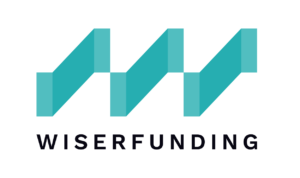As we enter 2025, the global economic outlook is cautiously optimistic, yet private lenders may face unexpected challenges. With central banks easing interest rates to encourage economic investment activity, the key question is whether growth will outweigh the risks or if a slowdown will catch lenders off guard. As credit conditions stay favourable, lenders must stay vigilant—tracking financial indicators and considering regional and geopolitical factors. Read on for key actions to keep your portfolio thriving.
Global Dynamics
At the outset of 2025, many economies are poised for a soft landing, supported by easing inflation and resilient labour markets, which create favourable credit conditions. Central banks are lowering interest rates, with further easing anticipated, though at varying rates across regions. Global growth is forecast at 3%, driven by consumer spending. However, slower growth is expected in the U.S. and China, while the eurozone recovers and emerging markets stabilise.
Donald Trump’s return to the White House introduces uncertainty, particularly with trade policies such as higher tariffs and taxes on Chinese goods, which could raise costs for U.S. consumers and businesses. This may strain global supply chains, especially with China, while fiscal stimulus unwinding and rising government debt could dampen economic activity. Increased U.S. tariffs on European goods could hurt productivity in countries like Germany, Italy, and Ireland, potentially reducing eurozone GDP by 0.2% annually and prompting further rate cuts from the European Central Bank, which could exacerbate inflation.
Regional disparities and geopolitical instability, including trade tensions and conflicts such as the Russia-Ukraine war and the Israel-Hamas conflict, may disrupt capital flows and increase risks for private lenders.
S&P Global Ratings. Global Credit Outlook 2025, December 2024.
Credit Market Outlook
Despite the complexities of global economic dynamics, a decline in defaults is forecasted, though the pace of improvement is expected to be slower than the previous rise. In the U.S., the trailing 12-month speculative-grade corporate default rate is projected to decrease to 3.25% by September 2025, down from 4.4% in September 2024 and a peak of 4.9% in April. In Europe, a more gradual improvement is expected, with the default rate forecasted to fall to 4.25% by September 2025, down from 4.7% in September 2024 and a peak of 4.8% in July. The downgrade potential for speculative-grade issuers is gradually decreasing, with the negative bias—reflecting issuers with negative outlooks or on CreditWatch with negative implications—falling below 18% for the first time in nearly two years. For investment-grade companies, the negative bias is now below 10%.
However, low-rated borrowers continue to face elevated borrowing costs, driven by lingering inflation, which has eroded consumer purchasing power. Heightened geopolitical uncertainty—especially rising protectionism—may weigh on global trade, further complicating the outlook.
Central banks are beginning to ease monetary policy, but the current rate cycle differs from previous ones: interest rates are projected to stabilise at levels significantly higher than the near-zero environment seen over the past decade. This reflects ongoing efforts to balance inflation control with sustainable economic growth. For private lenders, this presents a dual challenge. Elevated borrowing costs for many borrowers, particularly those with weaker credit profiles, will likely require increased focus on credit risk management.
Apollo Global Management. Outlook for private markets 2025, January 2025.
Recovery rates remain under pressure due to more leveraged and top-heavy debt structures in the speculative-grade market. Expectations for first-lien debt recovery have declined to 60%-65%, compared to the long-term average of 75%-80%. Contributing factors include higher total and first-lien debt leverage, smaller junior debt cushions, and the rise of covenant-lite loan structures. From 2018-2022, U.S. first-lien debt recovery rates averaged 72%, a notable decline from the previous five-year period.
These trends highlight the need for private lenders to re-evaluate portfolio strategies, tighten risk controls, and focus on sectors with strong fundamentals and growth potential.
Key Actions Private Lenders Should Take Now
As the economic landscape evolves, staying ahead of change and remaining competitive in the expanding private market will be a key challenge. By taking proactive measures, private lenders can navigate these challenges effectively.
🌏 Geopolitical Instability: Track macroeconomic data and trade agreements to anticipate disruptions in key markets. Use currency and geopolitical risk hedging to protect against sudden market shifts.
📉 Interest Rate and Inflation Pressures: Regularly stress-test portfolios under various interest rate and inflation scenarios to ensure resilience and adjust strategies accordingly.
📊 Corporate Credit Deterioration and Default Risk: Continuously monitor borrower financials and performance. Set up alerts for signs of declining profitability, rising debt, or shifts in industry conditions to proactively address potential defaults.
Fortify Your Portfolio and Remain Confident
At Wiserfunding, we equip you with the tools to stay ahead of market trends and anticipate changes. Our platform gives you access to comprehensive borrower insights—from financial data to macroeconomic indicators—ensuring informed decisions. It also enables seamless team collaboration and personalised alerts, so you’re always the first to know about borrower changes.
🏆 Ready to transform risks into opportunities? Let’s get in touch! https://wiserfunding.com/contact-us/
References
S&P Global Ratings. Global Credit Outlook 2025, December 2024.
Apollo Global Management. Outlook for private markets 2025, January 2025.
Muzinich & Co. Private Debt Outlook 2025: Good things come to those who wait, January 2025.
SIMILAR POSTS

9 September 2024
Unprecedented Measures: How Asset Managers Are Adapting to a New Era
The asset management industry is at a crossroads, facing unprecedented challenges and opportunities. The latest report from KPMG highlights [...]

23 August 2024
Gabrielle Sabato’s talk on the Impact of AI on credit risk management
In the recent "Code and Capital" video series by Finovate, Gabriele Sabato, co-founder and CEO of Wiserfunding, explored the [...]

21 August 2024
How AI Transforms Lending: Insights for SME Finance
How AI Drives Our Solutions at Wiserfunding At Wiserfunding, AI is at the heart of our cutting-edge solutions. Our [...]



